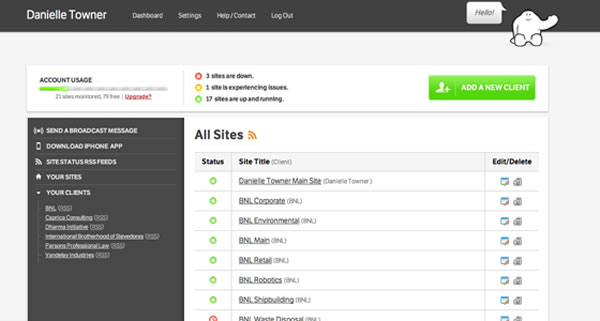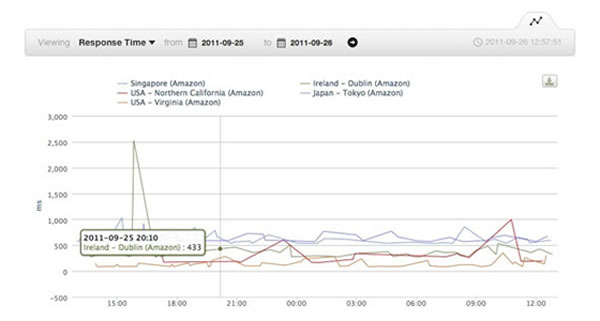When your website is functioning and everything is running smooth, you’re not thinking about your server uptime. You just expect that it’s working properly. And the truth is that your website usually is up. Most providers promise 99.9 percent server uptime. It’s virtually impossible to guarantee 100 percent server uptime because of unforeseen circumstances.
Why Your Website May Become Unavailable
Knowing why your site has become unavailable is as important as monitoring uptime. If you don’t understand the back end errors that can bring your site down, then it’s all but impossible to find a permanent solution. There are two primary reasons why websites goes down. The first problem is a front end error. This means that there’s a problem with your browser configuration and an issue with Internet connectivity.
A second common reason is a back end error. This includes things like coding problems or server-side downtime.
The number one server error your site may experience, outside of malfunctioning hardware, is a sudden and drastic increase in traffic. A lot of web servers have the ability to handle a sudden spike in incoming traffic. However, an unforeseen increase in data requests could overload your site’s resources, causing it to crash.
This is one of the reasons why having a good web host is important. You should check with your web host provider about their redundancy plans in the event of an unexpected spike in traffic. What if the increase in traffic to your site becomes a continuous thing? You will need to speak with your hosting provider about getting a bigger data plan. Or you may want to consider moving to a virtual private server or a cloud-based hosting plan.
The Importance of Server Uptime Tools
Whether you are a small business owner, an IT professional, or somewhere in between, you need to know whether your website is up or down. However, you don’t have the time to spend every second checking to make sure that your site is up. What you do need is an alert to tell you when your site is down and something that gives you an estimate of the revenue that you have lost. The tools that we are going to review can help you in this regard.
Are My Sites Up
Are My Sites Up is a paid service that focuses on keeping tabs on your website. If there is an issue that causes your website to go down, you will get on alert on your computer, on your phone, on your mobile device, and just about any way that you want. The service not only lets you see when your website is down, but it also offers a host of features to make your website as accessible as possible to clients. You’re even given error codes that let you know what happened to your site and why it was down.
 Image from Hosting Canada
Image from Hosting Canada
Pingdom
Pingdom allows you to monitor your website in a clear and straightforward way. You can monitor this information using an iOS device or android device. What’s great is that you are able to share the information very easily with others who need to know the information. You can receive notifications about the status of your site.
Server Density

Server Density offers both a paid and a free website monitoring service what makes this site stand out. It has been designed to have an easy to use interface, making it possible for you to view all of your services on one display. All the information pertaining to your site’s uptime is presented in a clear and easy to read way. When problems arise, you receive alerts in real time. What’s great is that you can remotely check your site from your iPhone or can use your android device.
As a website owner, the greatest asset you have is knowledge. The above dimension tools not only give you your current website uptime status, but they give you knowledge about your website’s performance and its functionality. Armed with this information you are able to make the needed adjustments to keep your site up as much as possible. When you get results using these tools, study them and make the needed adjustments. Doing so, will improve your uptime. Yeah diameter for seizure the, and help you provide a service your clients can benefit from.
Have you used any of the above-mentioned tools to monitor your server uptime? Do you have other tools that you would recommend to our readers? Please let us know in the comment section.







